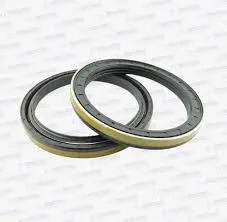10 月 . 09, 2024 22:10 Back to list
Understanding the Function and Importance of Radial Oil Seals in Machinery
Understanding Radial Oil Seals Function and Applications
Radial oil seals, often referred to as lip seals or rotary seals, play a pivotal role in various mechanical systems. These components are designed to prevent the leakage of lubricants while simultaneously keeping contaminants such as dirt and dust out of machinery. Their effectiveness hinges on their unique design, allowing them to maintain a tight seal around rotating shafts.
The basic structure of a radial oil seal comprises a flexible elastomeric lip and a metal casing. The elastomer, typically made from materials like nitrile or fluorocarbon, provides elasticity and resilience, ensuring a snug fit against the rotating shaft. The metal casing adds durability and support, allowing the seal to withstand high pressures and temperatures.
One of the most notable features of radial oil seals is their ability to handle dynamic and static applications. In rotating equipment, they can manage the movement of the shaft while also ensuring that any lubricant—like oil or grease—stays contained. This containment is crucial for the longevity of mechanical parts, as it reduces wear and tear caused by friction.
radial oil seal

Radial oil seals are ubiquitous in several industries. In the automotive sector, they are found in engines, gearboxes, and axles. They ensure that oil remains in the engine parts where it is needed for lubrication, while preventing dirt from entering the system. In industrial machinery, radial seals protect bearings and gears, contributing to smoother operations and increased efficiency.
The selection of the right radial oil seal is essential for optimal performance. Factors such as the type of lubricant, the temperature range, and the speed of operation all play a critical role in determining the most suitable seal. Engineers must consider these aspects to avoid premature seal failure, which can lead to significant downtime and costly repairs.
Installation also requires careful attention. A poorly installed seal can result in leaks and potentially catastrophic equipment failure. Proper alignment and the use of appropriate tools are vital to ensure that the seal functions as intended.
In conclusion, radial oil seals are indispensable components in many mechanical systems, providing effective sealing solutions that enhance machinery reliability and performance. As technology advances, the materials and designs of these seals continue to evolve, promising even greater efficiencies and capabilities in the future. Understanding their function and properties is crucial for industries that rely on them, underscoring their importance in modern engineering.